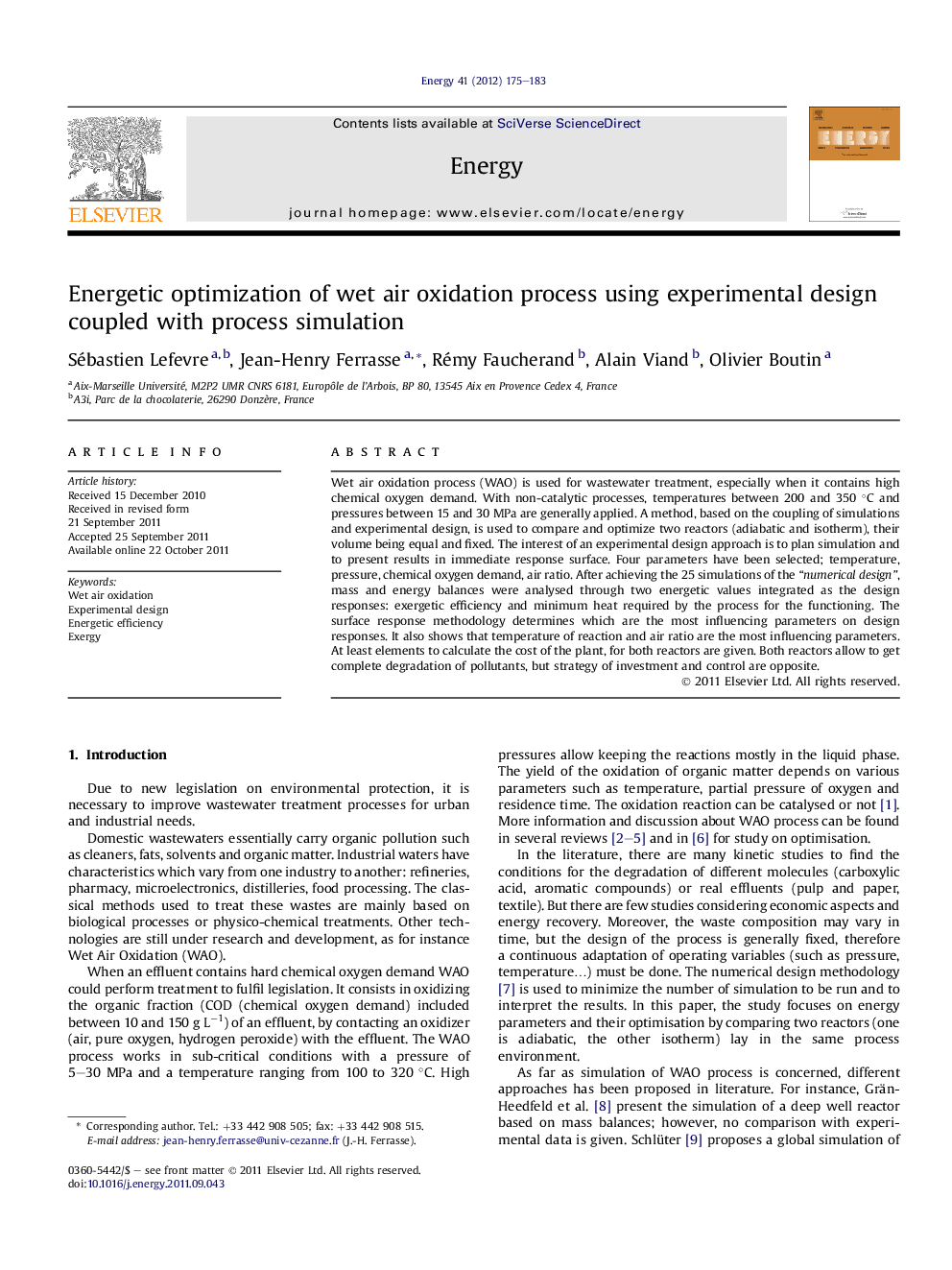| Article ID | Journal | Published Year | Pages | File Type |
|---|---|---|---|---|
| 1733491 | Energy | 2012 | 9 Pages |
Wet air oxidation process (WAO) is used for wastewater treatment, especially when it contains high chemical oxygen demand. With non-catalytic processes, temperatures between 200 and 350 °C and pressures between 15 and 30 MPa are generally applied. A method, based on the coupling of simulations and experimental design, is used to compare and optimize two reactors (adiabatic and isotherm), their volume being equal and fixed. The interest of an experimental design approach is to plan simulation and to present results in immediate response surface. Four parameters have been selected; temperature, pressure, chemical oxygen demand, air ratio. After achieving the 25 simulations of the “numerical design”, mass and energy balances were analysed through two energetic values integrated as the design responses: exergetic efficiency and minimum heat required by the process for the functioning. The surface response methodology determines which are the most influencing parameters on design responses. It also shows that temperature of reaction and air ratio are the most influencing parameters. At least elements to calculate the cost of the plant, for both reactors are given. Both reactors allow to get complete degradation of pollutants, but strategy of investment and control are opposite.
